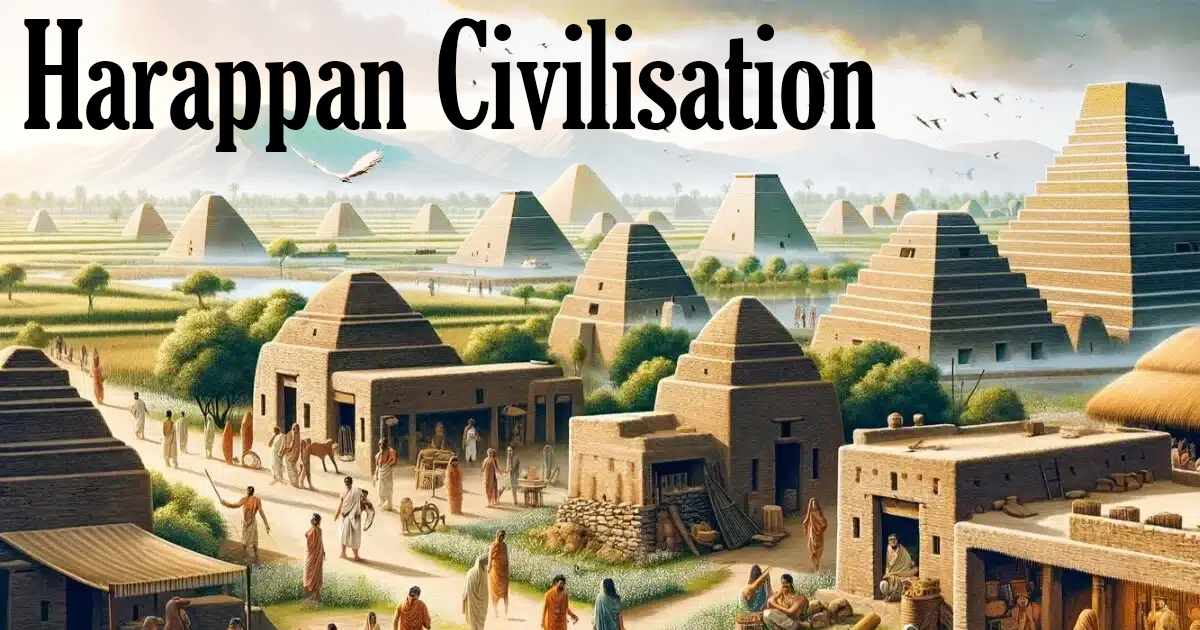
Context: In 1924, John Marshall, then-Director General of the Archaeological Survey of India (ASI), announced the discovery of the “civilisation of the Indus Valley” in The Illustrated London News.
Overview
- The Harappan civilisation spanned modern Pakistan, northwest India, and parts of Afghanistan, with significant archaeological sites including Harappa, Mohenjo-Daro, Rakhigarhi, and Dholavira.
Characteristics
- Urban Planning: The Harappans designed well-organized cities featuring grid layouts, advanced drainage systems, and standardized brick sizes.
- Craftsmanship: Known for intricate seals, pottery, and jewellery, they notably created unique steatite seals adorned with animal motifs and an undeciphered script.
- Trade Networks: The civilisation engaged in extensive trade, with artefacts made of lapis lazuli and carnelian sourced from distant regions.
Enigmas
- Undeciphered Language: The Indus script, comprising 400-600 symbols, remains undeciphered due to the absence of bilingual inscriptions.
- Spiritual Practices: Knowledge of Harappan religious beliefs is limited; seals depict possible deities, but the lack of temples leaves much uncertain.
- Causes of Collapse: The decline around 1900 BCE is debated, with factors such as climate change, tectonic activity, resource overexploitation, and invasions suggested but not clearly defined.
- Extent of Trade: Evidence indicates trade with Mesopotamia and other regions, but the specifics of exchanged commodities and their impact on Harappan society are unclear.
Significance
- Filling Historical Gaps: The discovery extended the timeline of settled life in South Asia by over 3,000 years, reshaping narratives about urbanisation.
- Cultural and Economic Insights: Harappans were skilled artisans in bead-making, pottery, and metallurgy, enhancing their economic strength and cultural identity.
- Influence on Subsequent Civilisations: The Harappan civilisation influenced later South Asian cultures through urban practices, agricultural techniques, and possibly religious beliefs.
- Sustainability Practices: The Harappans demonstrated advanced water management with effective drainage systems and likely rainwater harvesting, showcasing sustainable agricultural practices.
- Trade with West Asia: Evidence shows Harappans maintained maritime trade links with Mesopotamia and the Arabian Peninsula, indicating advanced navigation skills.
The Harappan civilisation remains a crucial area of study for understanding early urbanization, trade, and cultural development in South Asia.




